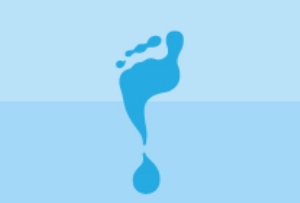Research: agriculture accounts for 92% of average global water use

Researchers at the University of Twente, in Enschede the Netherlands, report mankind’s water footprint in the US Proceedings of the National Academy of Sciences.
The study quantified and mapped the water footprint (WF) of humanity at a high spatial resolution.
The study interestingly introduced the topic of ‘virtual water’ in order to track gorss and net trade in water. Virtual water is the water used in products and commodities, for example the water required to produce a laptop, or the total amount of water involved in growing, harvesting, transporting, and milling grains.
The WF of national production is defined as the total freshwater volume consumed or polluted within the territory of the nation as a result of activities within the different sectors of the economy.
It can be calculated by summing the WFs of all water consuming or polluting processes taking place in the nation. Generally, one can distinguish three main water-using sectors: the agricultural sector, the industrial sector, and the domestic water supply sector.
Water footprints were estimated per nation from both a production and consumption perspective.
International virtual water flows are estimated based on trade in agricultural and industrial commodities.
The global annual average WF in the period 1996–2005 was 9,087 Gm3/y (=Gigametres cubed per year, a Gigametre being 1*109 metres).
Agricultural production contributes 92%. About one-fifth of the global WF relates to production for export.
The total volume of international virtual water flows related to trade in agricultural and industrial products was 2,320 Gm3/y.
The WF of the global average consumer was 1,385 m3/y.
The average consumer in the United States has a WF of 2,842 m3/y, whereas the average citizens in China and India have WFs of 1,071 and 1,089 m3/y, respectively.
Consumption of cereal products gives the largest contribution to the WF of the average consumer (27%), followed by meat (22%) and milk products (7%).
The volume and pattern of consumption and the WF per ton of product of the products consumed are the main factors determining the WF of a consumer.
The study illustrates the global dimension of water consumption and pollution by showing that several countries heavily rely on foreign water resources and that many countries have significant impacts on water consumption and pollution elsewhere.
The article is available open access at the Proceedings of National Academy of Sciences of the United States of America website:











